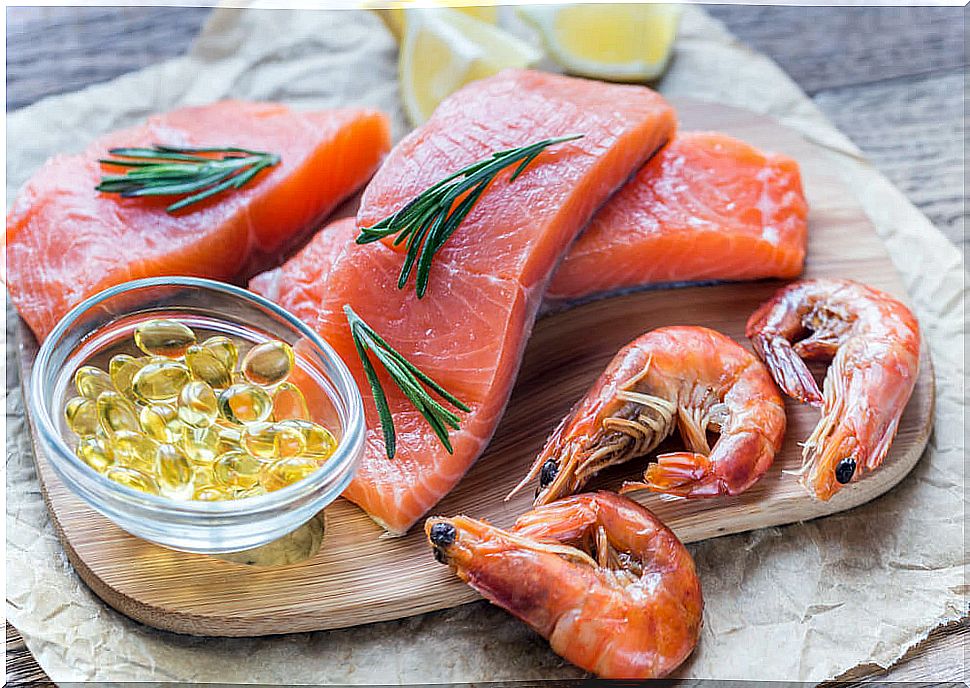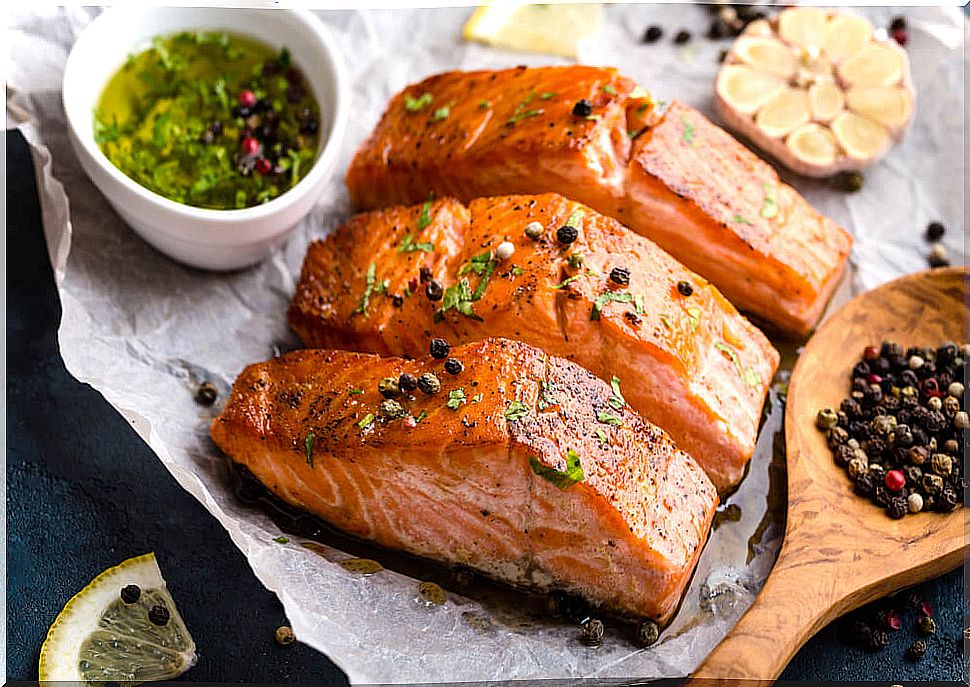Fish Rich In Omega 3 That You Should Incorporate Into Your Diet
You are trying to improve your health through diet and, perhaps, you have been recommended to consume omega 3. Well, here we tell you everything about this important fatty acid and, in addition, we recommend fish rich in omega 3 so that you can start consuming it now .
Omega 3 is a type of unsaturated fat that cannot be produced in the body, so the only way to obtain it is through diet. Its contribution is highly necessary for the body, helping to improve the lipid profile and prevent cardiovascular diseases, among other effects.
What are omega 3 fatty acids?

Fish contains unsaturated fatty acids that, when consumed in replacement of saturated fatty acids, such as those found in meats, can lower cholesterol. However, the main beneficial nutrients appear to be the omega-3 fatty acids found in fatty fish.
Omega-3 fatty acids can lower triglycerides, slightly lower blood pressure, and reduce blood clotting, strokes, and the risk of heart failure and irregular heartbeats. This is confirmed by the latest scientific research.
Eating at least one or two servings of fish per week, especially those high in omega-3 fatty acids, may lower your risk of heart disease, particularly sudden cardiac death.
Why Eating Fish Helps Your Heart
If you are concerned about heart disease, eating two to three servings of fish per week could reduce the risk of having a heart attack, as stated in a publication in Phytotherapy .
For many years, the American Heart Association has recommended that people eat fish high in omega-3 fatty acids at least twice a week.
Some people worry that the mercury or other contaminants in the fish may outweigh the heart-healthy benefits. However, when it comes to a healthier heart, the benefits of consuming fish often outweigh the potential risks of exposure to contaminants.
What are the fish rich in omega-3?

As expected, oily or oily fish have the highest omega-3 content (in mg percent), and among them the following stand out:
- Mackerel : between 2.5 and 5 mg percent.
- Herring : between 1.6 and 4.3 mg percent.
- Salmon : between 1.5 and 3 mg percent.
- Caviar : between 1.8 and 2.4 mg percent.
- Horse mackerel : between 1.5 and 2.8 mg percent.
- Sardine : between 1.3 and 1.8 mg percent.
- Tuna : between 0.5 and 1 mg percent.
Among white fish such as sole, hake, trout or others, the omega-3 content does not reach 1%, therefore, if we want to prioritize the intake of this type of heart-healthy fat, let’s take into account which are the fish with more omega-3s that help prevent disease.
How much fish should you eat?
- In the case of adults, it is recommended to consume at least two servings of fish rich in omega-3 per week. The serving size is 3.5 ounces (99 g).
- Women who are pregnant and young children should also consume 2 to 3 servings per week. However, they should avoid eating large fish: emperor, pike, grouper, dogfish, etc. And, preferably, choose small fish that should also be well cooked. This is because they are the most susceptible to the potential effects of toxins in fish.
Apart from fish, what other foods rich in Omega-3 could you consume?
- Nuts and seeds: such as flaxseeds, chia seeds, and black walnuts.
- Plant oils: such as flaxseed oil, soybean oil, and canola oil.
- Olive oil: we name it separately because its presence in the Mediterranean diet is much greater. For every 100 grams 8.3 are Omega-3.
- Fortified foods: such as certain brands of eggs, yogurt, juices, milk, soy drinks.
Introduce omega 3 into the diet
Finally, we tell you that, in addition to fish rich in omega 3, you can also find this dietary supplement in fish oil, krill oil, cod liver oil and seaweed oil (a vegetarian source that comes algae). These provide a wide range of doses and forms of omega-3s.









